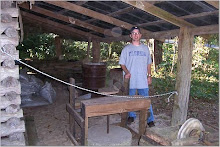Many issues came about in the creation of the Holocaust Museum. The faced the issue of how to Personalize the Story. A design team was established in order to personalize the Holocaust, since it wanted the visitors to the Museum to eschew forever the role of bystanders took during the Holocaust. They believed this could be accomplished effectively through a painful link with the faces of Holocaust victims.
The author revealed the challenges in determining if the Holocaust truly was a part of American history or was it primarily an element of Jewish and European history. They wanted to show as a part of our nation’s history so the museum would have a better chance of earning a spot in the national mall people would want to visit. They wanted to reveal the horrors of Holocaust but had trouble deciding what would be acceptable to show in the museums exhibits. The keep in mind according to the author that they were a National Museum on the National Mall and would behave accordingly in deciding what to show. The book also revealed how the museum would exhibit how United States citizens felt toward the Jewish refugees of Europe. The museum also had a dilemma when trying to decide how United States failure to use military action to destroy the death camps would be treated in the museum's exhibits.
The museum also had to decide how to tackle the topic of genocide without losing its primary mission as memorial to the victims of the Holocaust. During the creation of the Holocaust Museum it was mentioned how the creators had the responsibility to establish a permanent exhibit that represented the true picture of the Holocaust. When trying to decide what and how to present the artifact the creators had to deal the issue of why the Jews were getting a museum on the national mall before African Americans or Native Americans. It was suggested by some people that African Americans and Native Americans deserved a museum before the Jews because events took place here in America that affected their lives and it was said that it even happened on a wider scale.
Edward Linenthal's book Preserving Memory is a wonderful description of how political, spiritual, and ethical dilemmas came about during the establishment of a national memorial to the victims of the Holocaust and how museum creators dealt with these issues. This book revealed how the museum creators dealt with issues still vivid in many of the survivors minds. Linenthal did a masterful job showing how the museum creators dealt with the conflicts that came about during the creation of the museum. The museum is not just for a remembrance of victims the Holocaust but it is also a reminder that when a conflict arises we can not sit ideally by and watch. Linenthal said the museum could be used as a tool to prevent future uprisings. The Clinton cartoon on page 265 is a good example of how Linenthal thought the museum could be used. It shows President Clinton in front of the Vietnam memorial looking at all the names with a thought that we can not afford to go into Bosnia and then going to the Holocaust Museum and the thought was we can not afford not to go into Bosnia. Having never been to the museum I can not say what I would feel by see the exhibits but from what I have read in the book the museum seem to be a must see.
The Final Frontier?
16 years ago

1 comment:
I agree with your statements about the commemorative aspect of the museum and the active role it wanted to take in terms of influencing America's actions towards other acts of genocide. I thought it was really interesting how the museum tried to expand the role of the museum, while maintaining its true role to remember the victims and portray the horrors of such acts of genocide.
Post a Comment